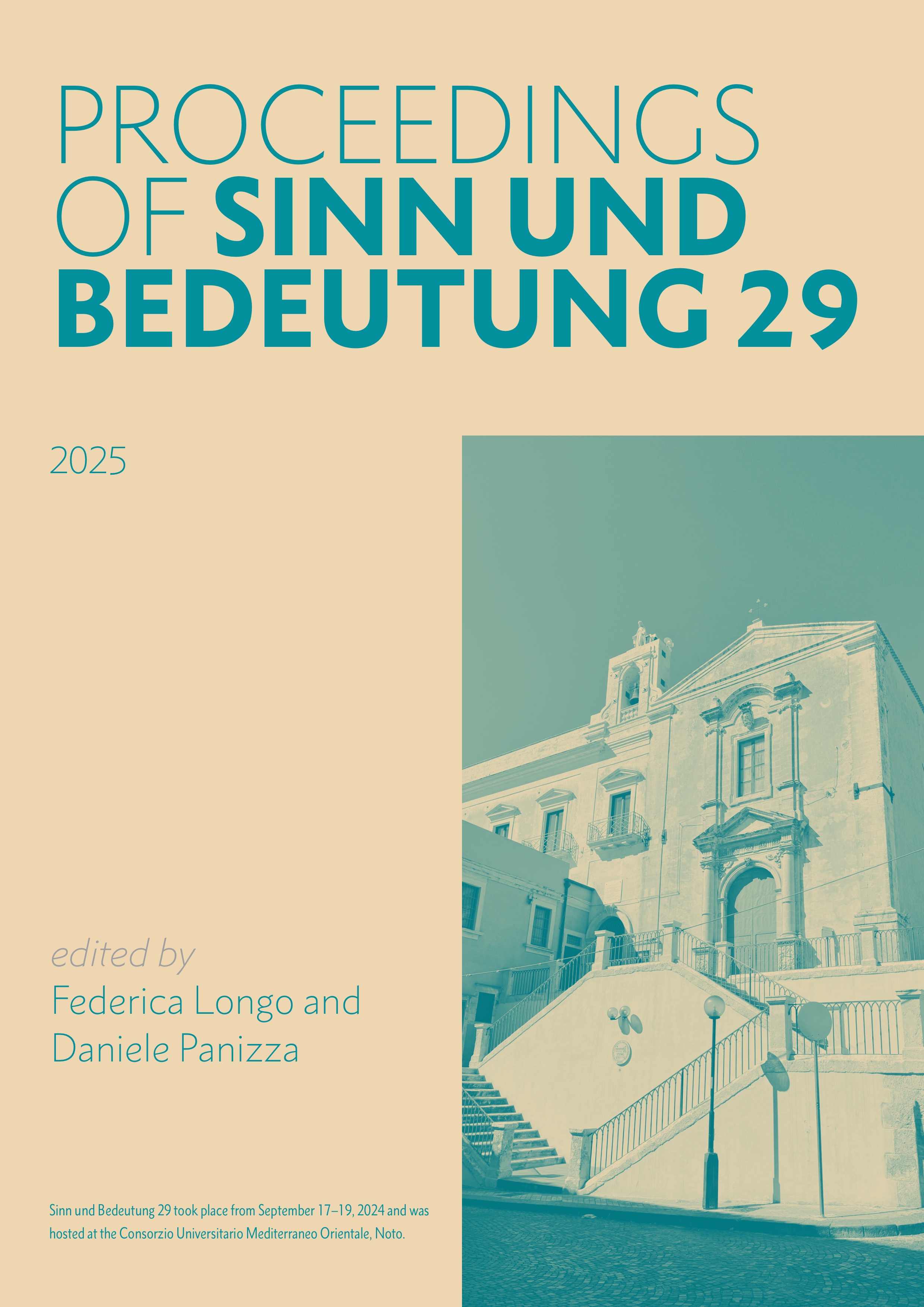Decoupling degrees from their instantiations
DOI:
https://doi.org/10.18148/sub/2025.v29.1189Abstract
Degree DPs, like the amount of paint you use, feature both a degree noun, like amount, and an entity noun, like paint. Scontras (2017) observes that these DPs can saturate not just degree predicates, like be three liters, but also entity predicates, like use, and argues that this flexibility shows that degrees, hence the denotations of degree DPs, are complex objects built from instantiating ordinary entities. Based on the distribution of degree DPs with two entity nouns, like the amount of paint that you use of wax, we challenge this argument and argue that the flexibility is instead due to syntactic ambiguity (Alonso-Ovalle and Schwarz 2023, 2024). We moreover present a direct argument against Scontras’ view of degrees as built from instantiating entities. This argument is based on the observation that two degree DPs with different entity nouns, like paint and wax, can be truthfully equated in copular sentences. To set the stage, we show that the internal composition of degree DPs does not require a complex construal of degrees, once we assume a relative clause syntax with pied piping and reconstruction that parallels the structure for how many-questions suggested in Heim (1987).Downloads
Published
2025-09-22
How to Cite
Alonso-Ovalle, L., & Schwarz, B. (2025). Decoupling degrees from their instantiations. Proceedings of Sinn Und Bedeutung, 29, 17–29. https://doi.org/10.18148/sub/2025.v29.1189
Issue
Section
Articles
License
Copyright (c) 2025 Luis Alonso-Ovalle, Bernhard Schwarz

This work is licensed under a Creative Commons Attribution 4.0 International License.
https://creativecommons.org/licenses/by/4.0/
